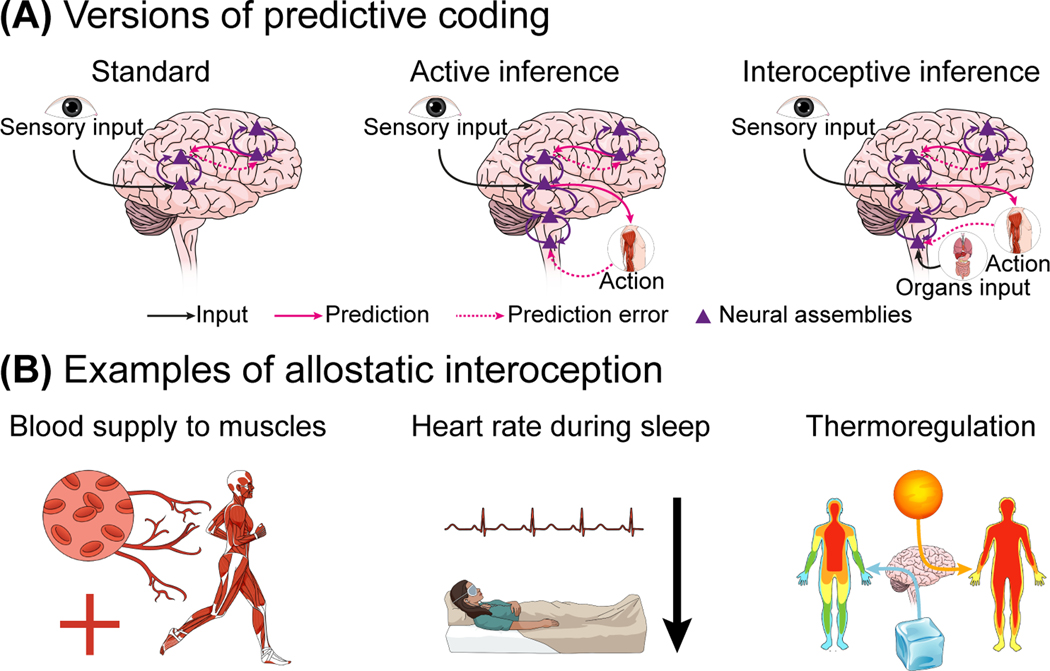Figure 1.
Predictive coding and allostatic interoception. (A) Predictive coding is a general algorithm that can be instantiated among different biological substrates and their hierarchies [120]. It has been widely applied to cortical brain activity (i.e., standard predictive coding), brain activity and proprioception (i.e., active inference), and brain activity and interoception (i.e., interoceptive inference). Three versions of predictive coding are schematically illustrated. In the first case, the minimization of prediction error is given by the updating of predictions to accommodate unexpected sensory signals. In the second case, the minimization is through performing actions that confirm predictions about sensory inputs. Finally, in the third case, the minimization is reached by performing actions to confirm predictions of interoceptive signals. (B) Allostasis refers to a general mechanism of bodily regulation by adaptation and changes. Allostasis can be instantiated at different levels of the body substrate. Three examples of interoceptive allostasis are illustrated. Left: greater oxygen requirement in the muscles during a fight or flight situation, leading to increased blood supply to the relevant muscles and the mobilization of resources needed to perform that redistribution (e.g., increasing cardiac input); Middle: reduction of heart rate during sleep to align with the reduced metabolic needs. Right: vasoconstriction (i.e., narrowing of blood vessels) when the body is facing low temperatures to conserve core temperature by reducing the blood flow to the skin capillaries.

